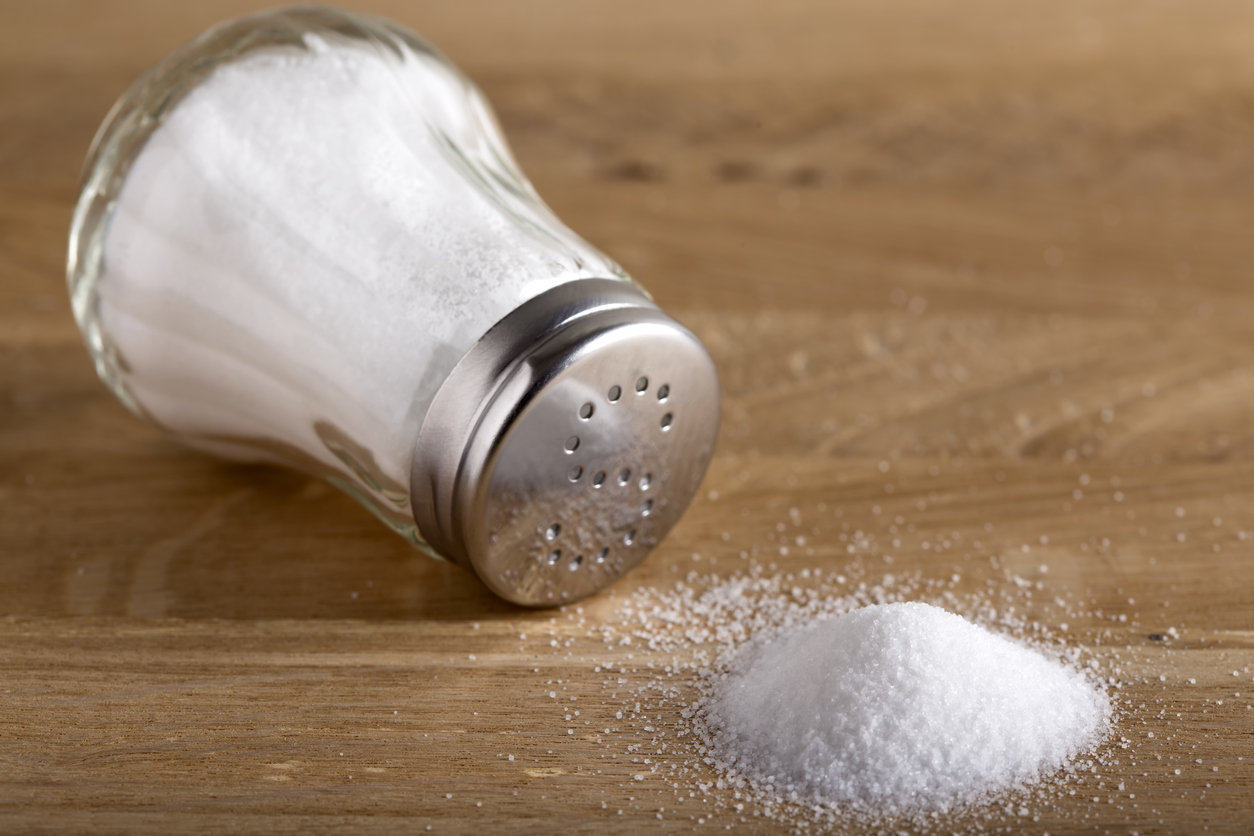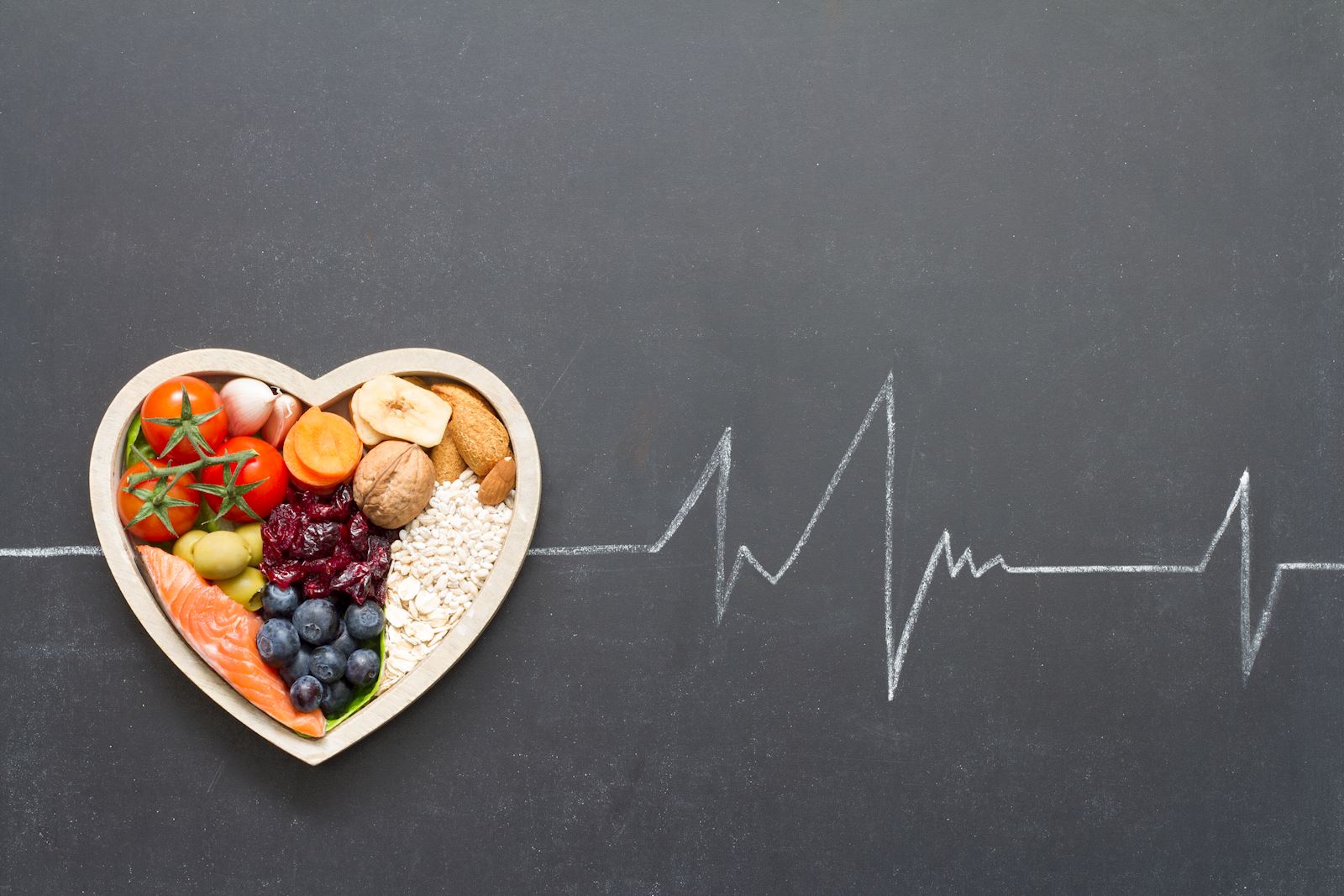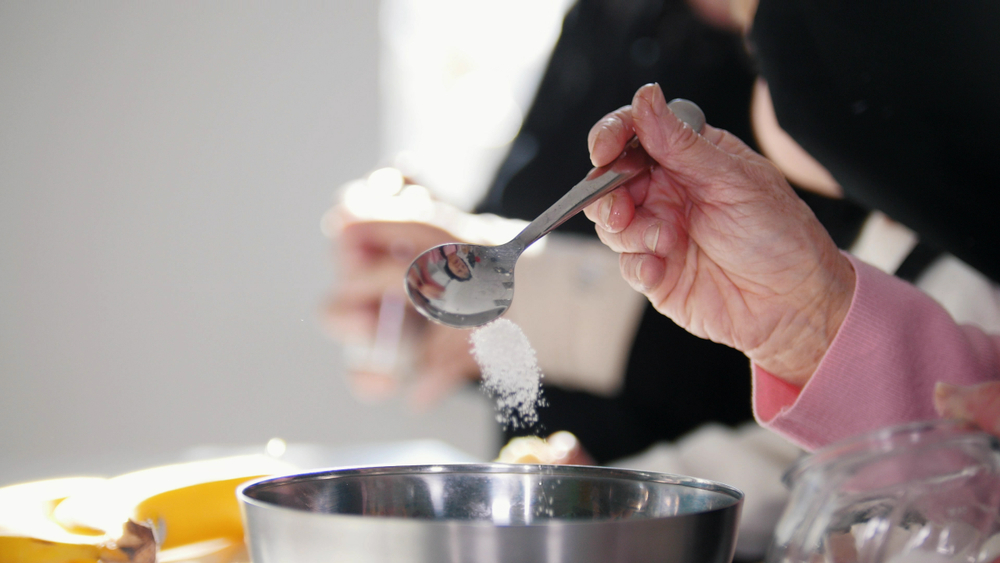A dash here, a pinch there, an extra shake on that. Salt elevates the taste of many foods, but the average American meal could do with a pinch less — or more — of sodium.
Based on dietary guidelines from the U.S. Department of Health and Human Services, most Americans should consume less than 2,300 mg of sodium each day. Here’s the problem: the average American consumes more than 3,400 mg of sodium daily!
Your body needs a little salt to function, but not much. It’s a mineral that helps balance the fluid in your body and supports muscle function. But a salty diet can lead to chronic health conditions including high blood pressure (also known as “hypertension”) and chronic kidney disease (CKD). People living with hypertension should try to consume no more than 1,500 mg of sodium a day. Everyone’s nutritional needs are different, so be sure to talk to your doctor about what’s right for you.
Know your salt
To help visualize what that recommended 2,300 mg of sodium looks like, think about this: one teaspoon of table salt has more than 2,300 mg of sodium. It’s also good to know that sodium and salt are not exactly the same. Sodium chloride is the chemical term for salt. Almost all of the sodium we eat — about 90% — is in the form of salt.
Ready to pass on the salt? Here are seven tips for reducing your salt intake:
1. Rinse canned veggies – Canned beans and vegetables can be high in salt. A quick rinse before you cook with them will cut the salt level in your final dish.
2. Order carefully – Restaurant food is notoriously high in sodium. When you order choose wisely; skip sauces, ask that no extra salt be added to your meal, and take portion control into account since restaurant meals tend to be large.
3. Read the labels – Packaged and canned goods labeled “low-sodium” or “no sodium” are your best bets.
4. Skip the mixes – Boxed grains and pastas, bottled sauces, and dressings tend to be high in sodium. Choose basic packaged goods such as plain pasta and rice, then add your own low-sodium seasonings.
5. Spice it up – Replace your salt shaker with a world of spices and herbs to give your food flavor and character. Bonus: some spices have added health benefits like turmeric, which can lower inflammation and cinnamon which has been shown to help lower blood pressure.
6. Choose fresh – Spend most of your shopping time in the exterior aisles of the store where you’ll find fresh produce and meats which are lower in sodium.
7. Pass on the processed meats – Sausages, deli meat, smoked meats, and canned fish tend to be high in salt. Opt for fresh, lean meats that you grill, roast or bake.
Moms Meals® can help
Low sodium meals are healthy options for everyone, but they’re especially important for people living with CKD and high blood pressure. Mom’s Meals offers medically tailored meals including lower sodium options which can help lower blood pressure. They’re delivered direct to your home and can be stored in the refrigerator for up to 14 days.


.jpg)
